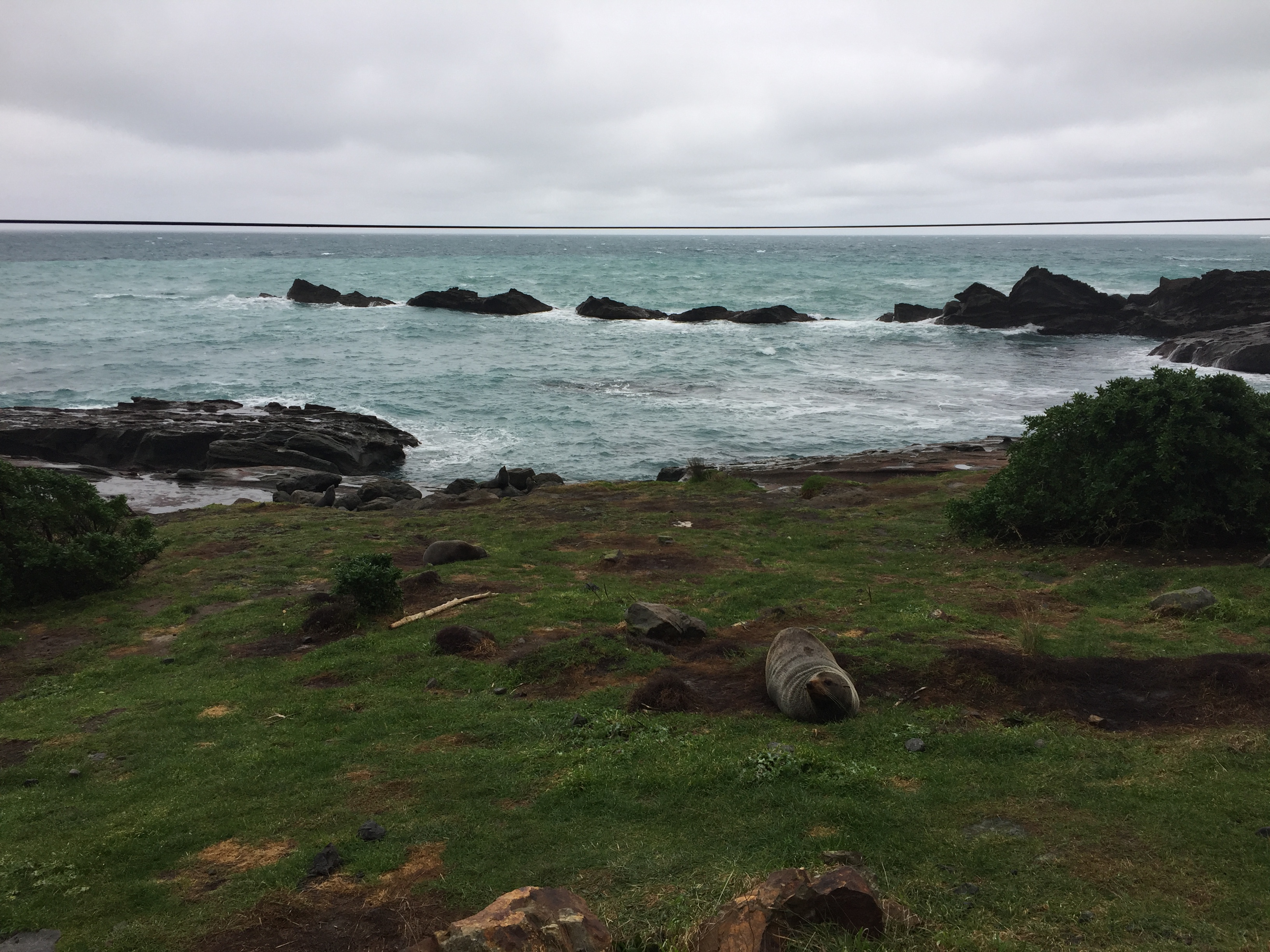Cape Palliser on:
[Wikipedia]
[Google]
[Amazon]
Cape Palliser is a promontory on the southern coast of New Zealand's
 Cape Palliser is home to a permanent fur seal colony. The rookery was found there in 1991, the first one found in the North Island in the 20th century, indicating that the seals are recovering from previous exploitation.
Cape Palliser is also a breeding site for red-billed gulls. This species has the conservation status of "Nationally at risk" and is "Regionally Vulnerable" in the Wellington region.
Cape Palliser is home to a permanent fur seal colony. The rookery was found there in 1991, the first one found in the North Island in the 20th century, indicating that the seals are recovering from previous exploitation.
Cape Palliser is also a breeding site for red-billed gulls. This species has the conservation status of "Nationally at risk" and is "Regionally Vulnerable" in the Wellington region.
North Island
The North Island, also officially named Te Ika-a-Māui, is one of the two main islands of New Zealand, separated from the larger but much less populous South Island by the Cook Strait. The island's area is , making it the world's 14th-larges ...
and is the southernmost point of the North Island; it is in fact considerably farther south than Nelson
Nelson may refer to:
Arts and entertainment
* ''Nelson'' (1918 film), a historical film directed by Maurice Elvey
* ''Nelson'' (1926 film), a historical film directed by Walter Summers
* ''Nelson'' (opera), an opera by Lennox Berkeley to a lib ...
or Blenheim in the South Island
The South Island, also officially named , is the larger of the two major islands of New Zealand in surface area, the other being the smaller but more populous North Island. It is bordered to the north by Cook Strait, to the west by the Tasma ...
.
It is located at the eastern end of Palliser Bay
Palliser Bay is at the southern end of the North Island of New Zealand, to the southeast of Wellington. It runs for 40 kilometres along the Cook Strait coast from Turakirae Head at the southern end of the Remutaka Ranges to Cape Palliser, the Nort ...
, 50 kilometres southeast of Wellington
Wellington ( mi, Te Whanganui-a-Tara or ) is the capital city of New Zealand. It is located at the south-western tip of the North Island, between Cook Strait and the Remutaka Range. Wellington is the second-largest city in New Zealand by m ...
- 100 kilometres by road.
A small settlement - Ngawi - is situated near Cape Palliser, where the main income comes from crayfish
Crayfish are freshwater crustaceans belonging to the clade Astacidea, which also contains lobsters. In some locations, they are also known as crawfish, craydids, crawdaddies, crawdads, freshwater lobsters, mountain lobsters, rock lobsters, ...
(southern rock lobster) fishing. Fishing boats are pushed into the sea on their trailers by bulldozers.
Kupe's Sail is another feature of Cape Palliser - a triangular upthrust of sedimentary rock shaped
like a sail. Maori history and the Kupe legend both feature Cape Palliser. Cape Palliser was named in 1770 by Captain James Cook in honour of his friend Admiral Sir Hugh Palliser of the British Royal Navy
The Royal Navy (RN) is the United Kingdom's naval warfare force. Although warships were used by Kingdom of England, English and Kingdom of Scotland, Scottish kings from the early medieval period, the first major maritime engagements were foug ...
.
The Cape Palliser Lighthouse is located here; it was first lit in 1897 but became automated in 1986. It flashes twice every 20 seconds.
Biodiversity
 Cape Palliser is home to a permanent fur seal colony. The rookery was found there in 1991, the first one found in the North Island in the 20th century, indicating that the seals are recovering from previous exploitation.
Cape Palliser is also a breeding site for red-billed gulls. This species has the conservation status of "Nationally at risk" and is "Regionally Vulnerable" in the Wellington region.
Cape Palliser is home to a permanent fur seal colony. The rookery was found there in 1991, the first one found in the North Island in the 20th century, indicating that the seals are recovering from previous exploitation.
Cape Palliser is also a breeding site for red-billed gulls. This species has the conservation status of "Nationally at risk" and is "Regionally Vulnerable" in the Wellington region.
References
Palliser Cook Strait {{Wellington-geo-stub